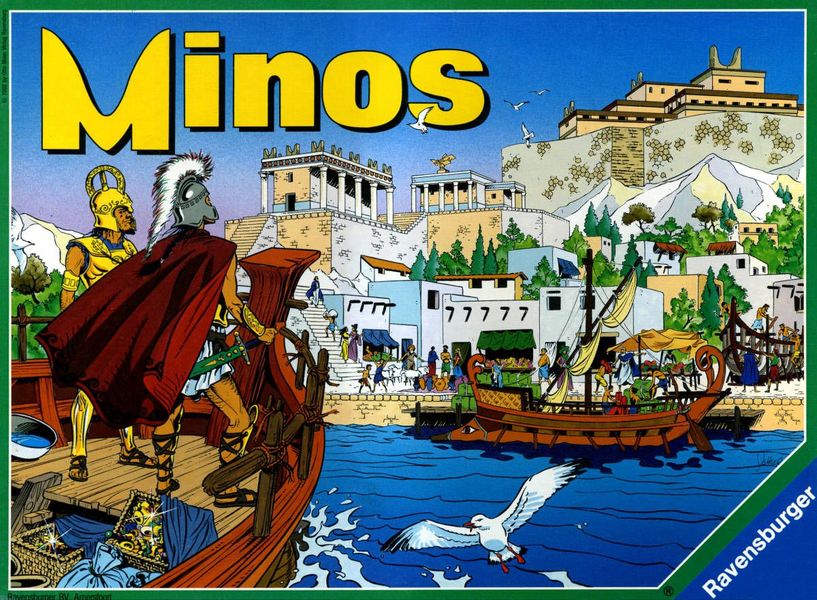Minos (1991) Board Game
Minos is a board game that was released in 1991 and is designed by J. C. Sohier. The game is set in ancient times, focusing on city building, civilization, economics, fighting, and nautical themes. Players take on the roles of competing city-states in the Mediterranean, vying for dominance and power.
Game Components of Minos
How To Setup Minos
Setup involves preparing the main board, player boards, and action boards according to the player count. For two or three players, use one side of the board with specific overlays. For four players, use the other side. Each player receives a starting set of resources and cards. The game includes a brief tutorial or rulebook to guide the setup process.
Gameplay Mechanics and Game Objective
Player Experience
“Minos: Dawn of the Bronze Age” offers a deeply strategic and immersive experience. Players must make crucial decisions each round, balancing short-term needs with long-term strategies. The game is highly replayable due to the variability of the board setup and the random draw of cards and dice rolls. Players adapt their strategies based on the actions of their opponents and the game’s progression.
Pros
Cons
Personal Thoughts on Minos
“Minos: Dawn of the Bronze Age” is ideal for fans of complex eurogames who enjoy deep strategy and engine-building. It is not suited for casual gamers or those who prefer simple, quick games. The game’s unique mechanics and high replayability make it a must-play for those who enjoy challenging and immersive board games. However, it may not be the best choice for larger groups due to the potential for downtime between turns.
We are supported by our audience. When you purchase through links on our site, we may earn an affiliate commission, at no extra cost for you. Learn more.

